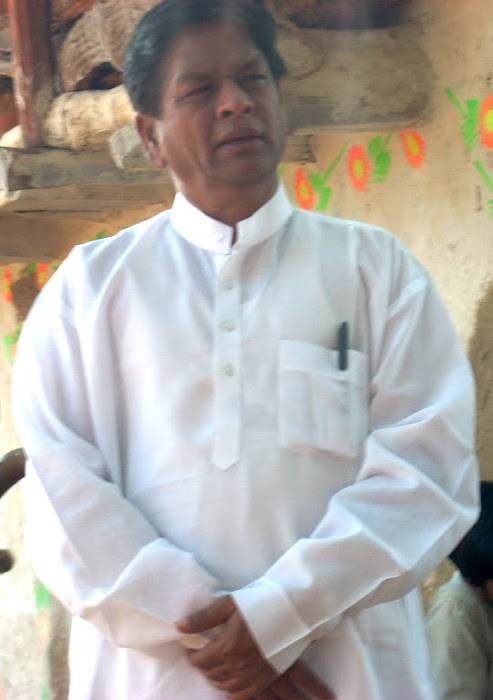Modern
History
Arrival of
the British : Towards
the end of the 19th century, the power of the Pune Peshwa weakened
considerably. The Holkars and Scindias fought among themselves to gain control
over the Pune court. The then Peshwa, was compelled to take help from the
British. In return, by the 1802 treaty of Bassein, the British gained control
over Peshwa territories in Banda, Hamirpur and parts of Jalaun, which had been
granted by Maharaj
Chhatrasal. After 1802, many of the local rulers
were granted sanads (leases) by the British, which entitled them to the lands
they controlled at the death of Ali Bahadur, in return for the rulers signing a
written bond of allegiance (ikrarnama) to the British. A political officer
attached to the British forces in Bundelkhand supervised British relations with
the sanad states. In 1806 British protection was promised to the Maratha ruler
of Jhansi, and in 1817 the British recognized his hereditary rights to Jhansi
state. In 1818 the Peshwa in Pune ceded all his rights over Bundelkhand to the British at
the conclusion of the Third Anglo-Maratha War.
The sanad states were organized into the Bundelkhand
Agency in 1811, when a political agent to the Governor-General of India was appointed
and headquartered at Banda. In 1818 the headquarters were moved to Kalpi, in 1824 to Hamirpur, and in 1832 back to Banda. The
political agent was placed under the authority of the Lieutenant-Governor of
the North-Western Provinces, headquartered in
Agra, in 1835. In 1849 authority over the Bundelkhand Agency was placed briefly
under the Commissioner for the Saugor and Nerbudda Territories,
who appointed a political assistant based at Jhansi. Shortly
thereafter, authority over Bundelkhand was placed under the Resident at
Gwalior, and the headquarters of the political assistant was moved
to Nowgong,
which remained until 1947. In 1853 the Raja of Jhansi died childless, and his
territory was annexed to British Bundelkhand. The Jhansi state and the Jalaun
and Chanderi
districts were then formed into a superintendency. In 1854 Bundelkhand Agency
was placed under the authority of the newly-created Central India Agency, headquartered at Indore.
Land
Administration and deterioration of agriculture
: From
1809, a period of over-assessment of land revenue commenced in the Bundelkhand
district. The severity of assessments was surpassed by methods of collection;
corrupt officials and speculators acquired large fortunes and lands. The
British had not understood the soil and climatic conditions of Bundelkhand,
which made agriculture very vulnerable. Bad seasons followed from 1819, but
revenue claims were not reduced. By 1830, the Bundelkhand district was reduced
to a condition of 'general bankruptcy', reported the
Thugs and
Background of Dacoits : However, the British could not provide a sound
administration and enforce rule of law in
Revolt
of 1857 :: A general uprising of
local chiefs, landlords and peasants marked In Bundelkhand, 1857. From the
1820s onwards, there was a succession of revolts across
Rani
Laxmibai : The widow of the Raja of Jhansi, Rani Lakshmi
Bai, protested the annexation because she was not allowed to adopt
an heir, and because the slaughter of cattle was permitted in the
Rule of
British Crown :
Administration
: Bundelkhand
was considerably re-organized after the British Crown assumed charge of the
Development
: British
rule brought many benefits to directly administered territories. Railroads were
constructed, initially as famine relief works, and eventually linked all district
headquarters to major cities like Mumbai and
In princely
state territories, a few rulers initiated some public welfare measures, such as
repair and construction of tanks. Patronage of artistes continued - among the
beneficiaries was Asgari Bai (1918-2006), one of
Freedom
Movement :
Emergence
of Congress : Bundelkhand also
joined the National freedom movement. A district Congress committee was
established in
'Bundelkhand Gandhi & Bundelkhand Kesri': Bundelkhand is the home of two great Indian freedom fighters and the father
of the freedom movement in the whole of bundelkhand, Dewan Shatrughan Singh
['Bundelkhand Gandhi & Bundelkhand Kesri'aka] & his wife Rani Rajendra
Kumari, who belong to the Pratihar clan of the agnikula rajputs - the head of
the Chaubisi These were the two fountain heads of the freedom movement in all
of Bundelkhand. They also were the main patrons of revolutionaries like
Chandrashekhar Azad who frequented their Castle in their native village of
Maungrauth. The Rani defeated the sitting UP Chief Minister C.B. Gupta as an
independent candidate. They were also the main inspiration behind the Bhoodaan
movement in Bundelkhand and Maungraut changed the history of the movement by
beecoming the first complete Gramdaan. They were contemporaries and friends of
Jawaharlal Nehru, GB Pant,Bhagvandas dubey,LN nayak,ML goyal and other great
freedom fighters.
Numerous scholars have done PhD's on the life of these 2
great Indian patriots. There is an annual mela on the birthday of these two
stalwarts held annually in Maungrauth in December..They are now the subject of
folk tales and songs highlighting their bravery and hailing them as symbols of
Bundelkhandi valor. Shatrughan Singh and his Rani. They are still reverred by
all including the rajputs in the area.
EMERGENCE
OF REVOLUTIONARY MOVEMENT: Chandrashekhar Azad, disguised as a sadhu,
directed his revolutionary activities first from Satar, in Orchha state, and
then from nearby
FREEDOM
STRUGGLE IN PRINCELY STATES: Despite severe obstacles, freedom struggles
were launched in princely states as well. On
In Orchha
state, the prominent freedom movement leader was Chaturbhuj Pathak,
a Gandhian who was later involved with the mission to end dacoity in the
Chambal ravines. Later, in 1947, another leader, Narayandas Khare,
emerged. Khare was brutally killed on
One member of
the princely class who was involved in the freedom movement was 'Dewan’ Shatrughan
Singh of Hamirpur. Initially with the revolutionary movement,
he became a Gandhian and organised Congress activities in the district with his
wife, Rani Rajendra Kumari. After





